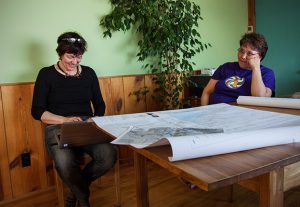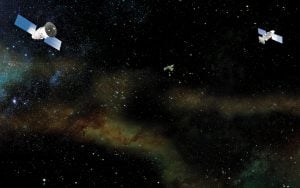The Students on Ice Arctic expedition is over, we’ve made our sad farewells and are all returning to our daily routines. One thing I miss about being up North is our daily story time.
Laakkuluk Williamson Bathory, mother, student, writer, performer — and, incidentally, a fellow staff member on the expedition — shared Inuit stories with us every night that we were aboard the Akademik Ioffe. To fully appreciate our surroundings as we sailed north along the coast of Baffin Island and across Davis Strait to Greenland, she said, we had to be aware that we were traveling in Inuit homeland. We had to understand where the Arctic’s sights and sounds came from, and how the people of the land, sea and ice interpreted them.
As part of our introduction to Greenlandic culture, Laakkuluk introduced us to uajeerneq, a dance that works like a vaccine — it instills a healthy dose of fear in the audience, the type of lesson that teaches people to be cautious on the land and at the same time to confront their fears. It’s an especially valuable lesson for a group of teenagers, whose adolescence and the sometimes overwhelming changes they’re experiencing unite them all in solidarity.
The lessons continued every evening, when Laakkuluk shared a story or two, teaching us Inuktitut words and sayings along the way. We learned that in Greenland, stories begin with the word Ilaanigooq, which means, “It is said to be a part of our reality.” We listened, enraptured, to the story of the sun and moon, and learned why the moon chases the sun across the skies in vain. In another story, we explored the origin of lies.
We learned the origin story of Sedna, or Sassuma Arna in Greenlandic, the woman who was banished by her father when she announced she was pregnant with a litter of half-canine, half-human beings. Enraged, the father sliced off Sedna’s fingers and sent her to the bottom of the sea, and her dismembered fingertips became the creatures of the sea. When the people disrespected nature, Sedna recalled her creatures as a reprimand. It took the pleading of shamans to convince her to release her grip on the sea’s bounties.
After hearing the story of Sedna, one student asked whether it was true. “It is said to be a part of our reality,” Laakkuluk responded. “As much as stories are true, that’s a true story.” Considering what we experienced in the Arctic, it’s not difficult to believe those stories, as fantastical as they may sound.
We witnessed the power of nature in learning the geography that defines people’s way of life and travel in the Arctic. We saw first-hand how ice governs the sea, trapping even the sturdiest ships–our sea ice plight has even been in the news. We watched polar bears clamber onto sea ice and lounge around before falling into a cuddly nap. We spotted walruses and learned about the diversity of plant species that carpet what appear from a distance to be barren, lifeless islands. We watched sunrises and sunsets; we captured images of fantastic-looking icebergs at twilight. We tried to make a connection with every new element we encountered, whether by learning about the science of glaciers, capturing photos of wildlife or tracking where we are on a map.
The connection was only complete once we heard Laakkuluk tell us the stories of the land and sea. Our shared experience of the Arctic and the stories that shape it endowed us all with a clearer sense of place. That was truly a great privilege.




